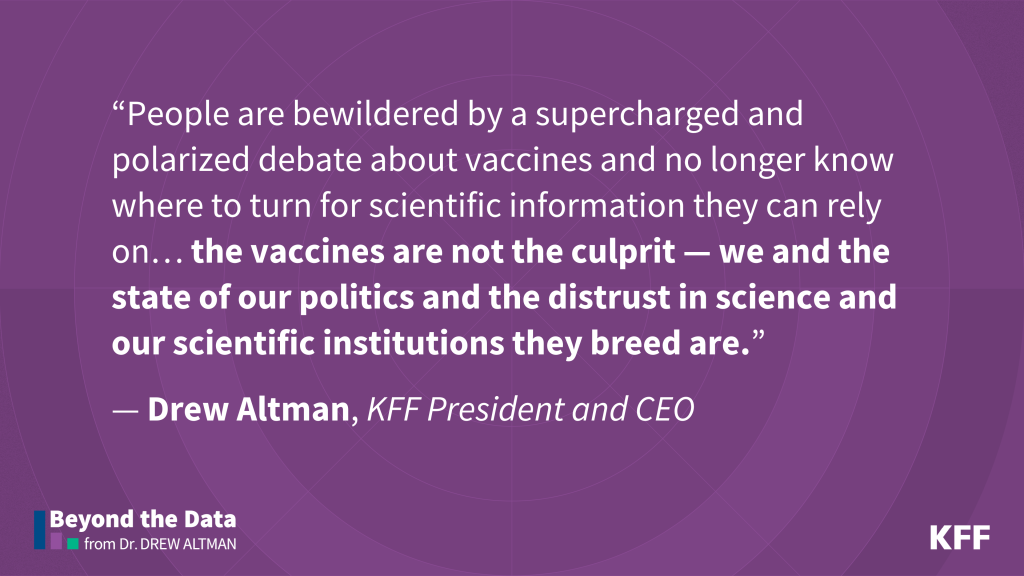Five Key Facts About People Experiencing Homelessness
President Trump recently signed an executive order on homelessness, mental health, and substance use that leverages federal funding priorities and other administrative tools to encourage states to ban public drug use, remove unhoused people from public spaces, and broaden civil commitment laws to permit involuntary psychiatric civil commitments in more circumstances. The Trump administration also invoked the Home Rule Act to place D.C.’s police force under federal control and deployed the National Guard to clear homeless encampments in the city and address crime. These actions follow nationwide passage of court-backed state laws making it easier for law enforcement to ticket, fine, or arrest people sleeping on public property.
According to the U.S. Department of Housing and Urban Development (HUD), more than 770,000 people were experiencing homelessness on a single night in January 2024, the highest ever recorded. The links between homelessness and health are complex, and past KFF research found that people with prior experiences of homelessness have disproportionate physical and mental health needs and face greater socioeconomic challenges compared to those who have never experienced homelessness. People experiencing homelessness who are unsheltered also experience higher rates of chronic homelessness, chronic disease, mental illness, and substance abuse than those who are sheltered.
This data note reviews trends in homelessness and characteristics of people who are homeless using data from HUD’s Point-in-Time (PIT) count of sheltered and unsheltered people experiencing homelessness. The PIT count is generally conducted on a single night during the last ten days of January. These estimates may undercount the total number of people experiencing homelessness, particularly among the unsheltered.
1. From 2018-2024, the number of people experiencing homelessness on a single night increased nearly 40% to over 771,000 people, with nearly four in ten (36%) staying in unsheltered locations.
The HUD PIT survey counts people experiencing homelessness in both sheltered and unsheltered settings on a single night. People are counted as unsheltered if they sleep in locations not ordinarily used as a regular sleeping accommodation, such as cars, parks, abandoned buildings, or campgrounds. The remainder of people experiencing homelessness were in sheltered locations, with nearly six in ten (56%) staying in emergency shelters and nearly one in ten (9%) in transitional housing, which is temporary housing with supportive services (Figure 1). Between 2018 and 2024, the number of people experiencing homelessness rose by nearly 40%. This increase was primarily driven by the growth in the number of people staying in emergency shelters and experiencing unsheltered homelessness, while the number of people in transitional housing declined over the same period. Nearly half of the overall increase occurred between 2023 and 2024, during which the total number of people experiencing homelessness increased by 18%. According to HUD, rising housing costs and the end of the COVID-19 public health emergency in May 2023, which ended the eviction moratorium and other income and safety net programs, drove these recent increases.
Beyond shifts in sheltered and unsheltered homelessness, the number of people experiencing “chronic homelessness”—defined by HUD as long-term or repeated homelessness among people with a disability—increased 73% between 2018 and 2024 (from about 97,000 to 168,000). However, the number of adults experiencing homelessness who were veterans fell 13% from 2018 to 2024, making up 5% of the share of all adults experiencing homelessness in 2024, similar to their share of the general adult population (6%). An increase in housing assistance programs from the Department of Veterans Affairs (VA) in recent years likely drove this decrease.
2. In 2024, over eight in ten (81%) people experiencing homelessness were adults, but the number of children experiencing homelessness grew at double the rate of adults.
On a single night in January 2024, there were over 623,000 adults and 148,000 children experiencing homelessness, with adults consistently representing about eight in ten of all people experiencing homelessness since 2018 (Figure 2). However, from 2023 to 2024, the number of children experiencing homelessness grew by 33% (from about 112,000 to 148,000), double the percentage increase among adults, which increased by 15% (from about 541,000 to 623,000). Most households with children experiencing homelessness are sheltered, as children made up less than one in ten unsheltered people in 2024. Housing insecurity during childhood is associated with negative health outcomes later in life, including anxiety and depression. Older adults also represented a growing share of the number of people experiencing homelessness, with the share of people experiencing homelessness ages 55 and older increasing by 6% from 2023 to 2024. Research found that this aging population of older adults has comprised a disproportionate share of single adults experiencing homelessness, which may drive future increases in the share of older adults experiencing homelessness.
3. In 2024, Southern and Western states had higher shares of people who were experiencing homelessness who were unsheltered compared to other parts of the country.
States in the Northeast and West had higher rates of people experiencing homelessness per 10,000 people than elsewhere in the country on a single night in January 2024 (Figure 3). The share of people experiencing homelessness who were unsheltered by state were highest in Southern and Western states, including in California (66%), Oregon (62%), Alabama (59%), and Florida (54%). In contrast, the shares of people who were experiencing homelessness who were unsheltered were lowest in New York (4%) and Vermont (5%), despite these states having relatively high rates of people experiencing homelessness per 10,000 people. These patterns may reflect a combination of local factors, including climate, housing costs, shelter capacity, right to shelter laws, and law enforcement that bring more people into emergency shelters.
4. In 2024, about seven in ten (68%) people experiencing homelessness were people of color.
White (32%), Hispanic (31%), and Black (30%) people each accounted for about three in ten of people experiencing homelessness on a single night in January 2024, with other racial and ethnic groups making up smaller shares (less than 5%) (Figure 4). Black, Hispanic, AIAN, and NHPI people made up a disproportionate share of the people experiencing homelessness compared to their share of the total population.
5. In 2024, adults experiencing homelessness were more likely to have serious mental illness (SMI), substance use disorder (SUD), and HIV/AIDS than the general population.
In 2024, over two in ten (22%, or 140,000) adults experiencing homelessness on a single night in January met HUD’s SMI definition, compared to about 5-6% of adults overall according to the National Survey of Drug Use and Health (NSDUH) (Figure 5). A similar share (18%, or 113,000) of adults were identified as having a chronic substance use disorder (SUD) according to HUD’s definition in the point-in-time count, compared to about 3% of adults in the general population who met NSDUH criteria for severe SUD. These shares are also higher among adults experiencing unsheltered homelessness, with the share of those with chronic SUD increasing in recent years. SMI and SUD often co-occur—about one-quarter of people with SMI also has an SUD—but HUD’s publicly available data do not report the overlap of these conditions. About 2% (11,000) of adults experiencing homelessness had HIV/AIDS, compared to less than 1% of the general population living with HIV. Recent changes to the Ryan White Program under the Trump administration may reduce federal funding and access to care, treatment, and support services for people with HIV.
































